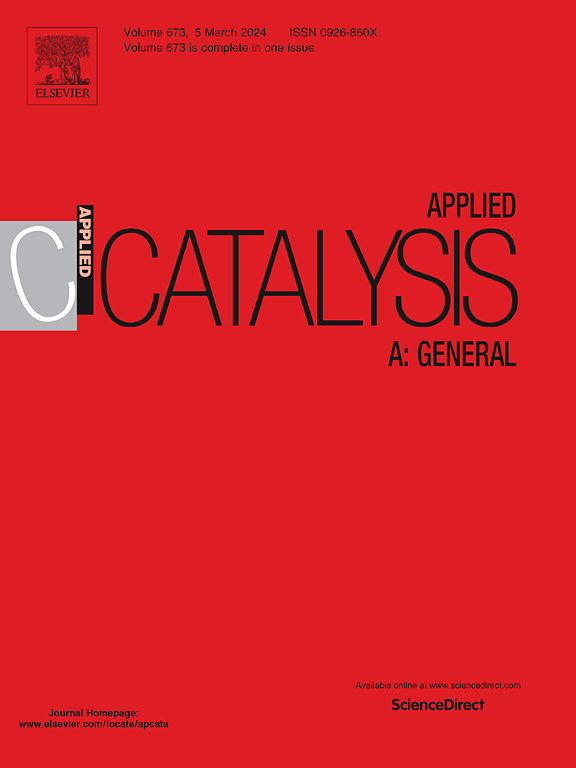将高岭土废料转化为合成缩醛的高性能催化剂
IF 4.8
2区 化学
Q2 CHEMISTRY, PHYSICAL
引用次数: 0
摘要
在本研究中,利用磺酸基对高岭土进行功能化,以提高其结构和化学性能,从而制备出高性能的非均相催化剂。利用FTIR、XRD、TGA、BET (n2 -物理吸附)和TEM-EDX等技术对功能化材料进行了表征。巯基的加入引入了活性位点,显著提高了离子交换能力,从而提高了催化性能。在优化条件下,功能化后的高岭土废渣作为催化剂用于苯甲醛的缩醛反应,转化率可达98 %。将高岭土废物成功转化为高效催化剂表明其在绿色化学,特别是可持续合成方面具有更广泛应用的潜力。缩醛,目标产品,是有机合成和制药工业的重要中间体。本研究提出的催化过程为缩醛的形成提供了一种高效、环保的方法,推动了多相催化领域的发展。此外,将这种功能化材料的应用扩展到其他具有挑战性的反应中,可以进一步突出其在各种工业过程中作为可持续催化剂的多功能性和潜力。本文章由计算机程序翻译,如有差异,请以英文原文为准。
Converting kaolin waste into a high-performance catalyst for acetals synthesis
In this study, kaolin waste was functionalized with sulfonic groups to enhance its textural and chemical properties, resulting in a high-performance heterogeneous catalyst. The functionalized material was thoroughly characterized using various techniques, including FTIR, XRD, TGA, BET (N2-physisorption), and TEM-EDX. The incorporation of sulfonic groups introduced active sites that significantly increased the ion exchange capacity, thereby enhancing the catalytic performance. When employed as a catalyst in the acetalization of benzaldehyde, the functionalized kaolin waste achieved a remarkable conversion rate of 98 % under optimized conditions. The successful transformation of kaolin waste into a highly effective catalyst demonstrates its potential for broader applications in green chemistry, particularly in sustainable synthesis. Acetals, the target products, are crucial intermediates in organic synthesis and the pharmaceutical industry. The catalytic process proposed in this study offers an efficient and environmentally friendly approach to acetal formation, advancing the field of heterogeneous catalysis. Additionally, extending the application of this functionalized material to other challenging reactions could further highlight its versatility and potential as a sustainable catalyst in various industrial processes.
求助全文
通过发布文献求助,成功后即可免费获取论文全文。
去求助
来源期刊

Applied Catalysis A: General
化学-环境科学
CiteScore
9.00
自引率
5.50%
发文量
415
审稿时长
24 days
期刊介绍:
Applied Catalysis A: General publishes original papers on all aspects of catalysis of basic and practical interest to chemical scientists in both industrial and academic fields, with an emphasis onnew understanding of catalysts and catalytic reactions, new catalytic materials, new techniques, and new processes, especially those that have potential practical implications.
Papers that report results of a thorough study or optimization of systems or processes that are well understood, widely studied, or minor variations of known ones are discouraged. Authors should include statements in a separate section "Justification for Publication" of how the manuscript fits the scope of the journal in the cover letter to the editors. Submissions without such justification will be rejected without review.
 求助内容:
求助内容: 应助结果提醒方式:
应助结果提醒方式:


